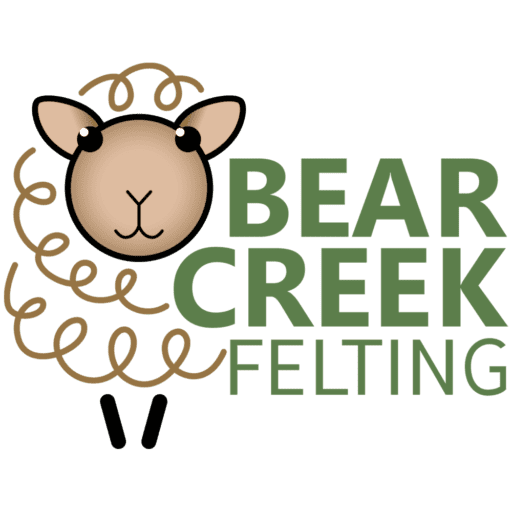 While most people rang-n 2020 back in January, when you live on a farm, Spring is the true start to a new year! And absolutely nothing marks a new season quite like bringing life into the world.
While most people rang-n 2020 back in January, when you live on a farm, Spring is the true start to a new year! And absolutely nothing marks a new season quite like bringing life into the world.
It’s lambing season at Bear Creek, and so far, more than 46 babies have hit the ground with a “bleat.” This is without question my favorite time of year. Watching the mommas do what comes so naturally, and realizing each lamb is a little miracle.
Looking back, I fell in love with sheep and fiber arts all at once. I was awed when I connected the art of needle felting to the magic of these amazing creatures who seemed to say, “Here, take my coat and make cool stuff out of it. No worries, I’ll grow a new one!”
There are many breeds of sheep, and here at Bear Creek, we’ve narrowed our 100+ flock to Romney, Blue Faced Leicester, and Cormo sheep. There is much that goes into turning the fleece into the body of a dragon, but first, there must be lambs, so let’s start the story at the beginning.
For Everything A Season

When you live on a farm, most of life flows in harmony with the seasons. While there is a never-ending list of chores, chipping ice from the troughs is something I associate with short days and long nights.
The Spring season is filled with hope for our farm, our animals, and especially our sheep. I remind myself that most of you have not experienced “lambing season,” so I will do my best to give you a glimpse into this crazy farm life!
Female sheep are called Ewes, and the males are Rams. We refer to their mating season as the “tupping season” since rams are sometimes called “Tups.” Following a roughly five-month gestation period, we can expect the lambs (aka baby sheep) to be born.
We are very selective with our breeding program, putting careful thought into which rams are best for which ewes. Like many mammals, sheep will sync-up their cycles, which is why tupping and lambing impact the entire flock practically at once.
Ewes are as individual as humans when it comes to their personal “birth plans.” Some deliver their lambs quickly and prefer to give birth alone in the field, while others stick to our lambing shed. But we always have some first-time mothers, so we keep a close eye on those ewes in case they need a little extra help or run into trouble.

It’s common for ewes to give birth to twins, and it’s a regular occurrence for many farmers to find lambs that were born during the night to ewes who wanted a little privacy.
But because lambs have many natural predators, we prefer our ewes to stick to our birth plan, and the lambing barn. There we maintain all the necessities to support the births plus we have barn cameras to monitor their every move and plenty of bedding for our new arrivals.
Standing On Their Own
Lambs are up and semi-mobile within minutes of delivery. We make sure the ewes and their newborns have time and space to bond and  that the lambs are getting fed shortly after their birth. Lambs will stay with the ewes for about four months, and then they are weaned.
that the lambs are getting fed shortly after their birth. Lambs will stay with the ewes for about four months, and then they are weaned.
After a few days, the ewes and lambs will leave their private areas and be turned out with the rest of the flock. We make sure everyone is healthy and thriving before introducing them to the greater flock. They will receive their ear tags, vaccines and whatever else they may need. While our vet is very busy this season as well, we are grateful to have such fantastic care for our lambs and ewes.
Someday, the fleece from these lambs may become the gorgeous roving that creates a beautiful sculpture. This circle and connectivity always remind me of why I became so passionate about this life so many years ago—new beginnings, hope, and the promise that life goes on.
If you want to follow us through the rest of lambing season, check out our Facebook and Instagram pages for more cute little lambs greeting the world on shaky legs.
Check out our weekly EweTube to follow along on our progress turning an abandoned 100 year old school into a fiber arts retreat center as well as answers to your fiber arts questions, product updates and fun stories about the flock.






